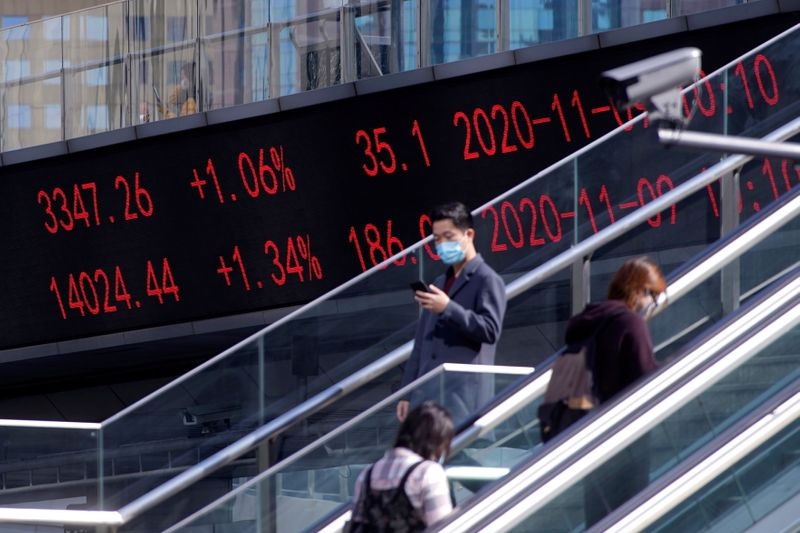© Reuters
Investing.com — Most Asian stocks sank on Monday after China cut its key lending rates by a smaller-than-expected margin, while anticipation of more cues on U.S. monetary policy also kept sentiment subdued.
Chinese stocks were by far the worst performers for the day, given that a smaller-than-expected rate cut from the People’s Bank of China (PBOC) signals limited policy support for the economy.
Losses spilled over into most regional markets, with most China-exposed stocks trading lower.
Asian stocks were also nursing steep losses from the prior week amid growing concerns over higher U.S. interest rates, with focus now turning to the later this week.
Chinese stocks sink as PBOC cut disappoints
China’s and indexes fell 0.4% and 0.3%, respectively, while Hong Kong’s index fell 0.8%.
The PBOC cut its one-year (LPR) by 10 basis points, while the , which is used to determine mortgage costs, was left unchanged. Analysts had forecast at least a 15 basis point cut in both rates.
The move indicated that Asia’s largest economy has limited headroom to keep loosening monetary policy, which bodes poorly for the country as it struggles with a slowing post-COVID recovery.
The LPR was already at its lowest level seen in data dating back to 2013, after a series of cuts over the past year.
Still, losses in Chinese stocks were somewhat limited by the China Securities Regulatory Commission proposing more steps to stabilize the stock market. Chinese indexes were trading close to their weakest levels for the year.
Beleaguered real estate developer Country Garden Holdings (HK:) rose nearly 3%, although its shares remained close to record lows hit last week.
Losses in China spilled over into Australia’s index, which fell 0.1%.
On the other hand, Japan’s index rose 0.9%, as it recovered from steep losses logged last week. South Korea’s also added 0.6%, while futures for India’s index pointed to a flat open.
Fed, U.S. rates remain in focus
Markets were also on edge ahead of more cues from the Jackson Hole Symposium later this week, especially after recent data showed that U.S. inflation rose and the labor market remained tight.
The Federal Reserve also recently signaled that it was still considering higher interest rates this year, with analysts steadily tapering their expectations for .
The prospect of higher U.S. rates spurred steep losses in most Asian stocks last week, and is expected to continue dampening regional sentiment for the time being.
Read the full article here







